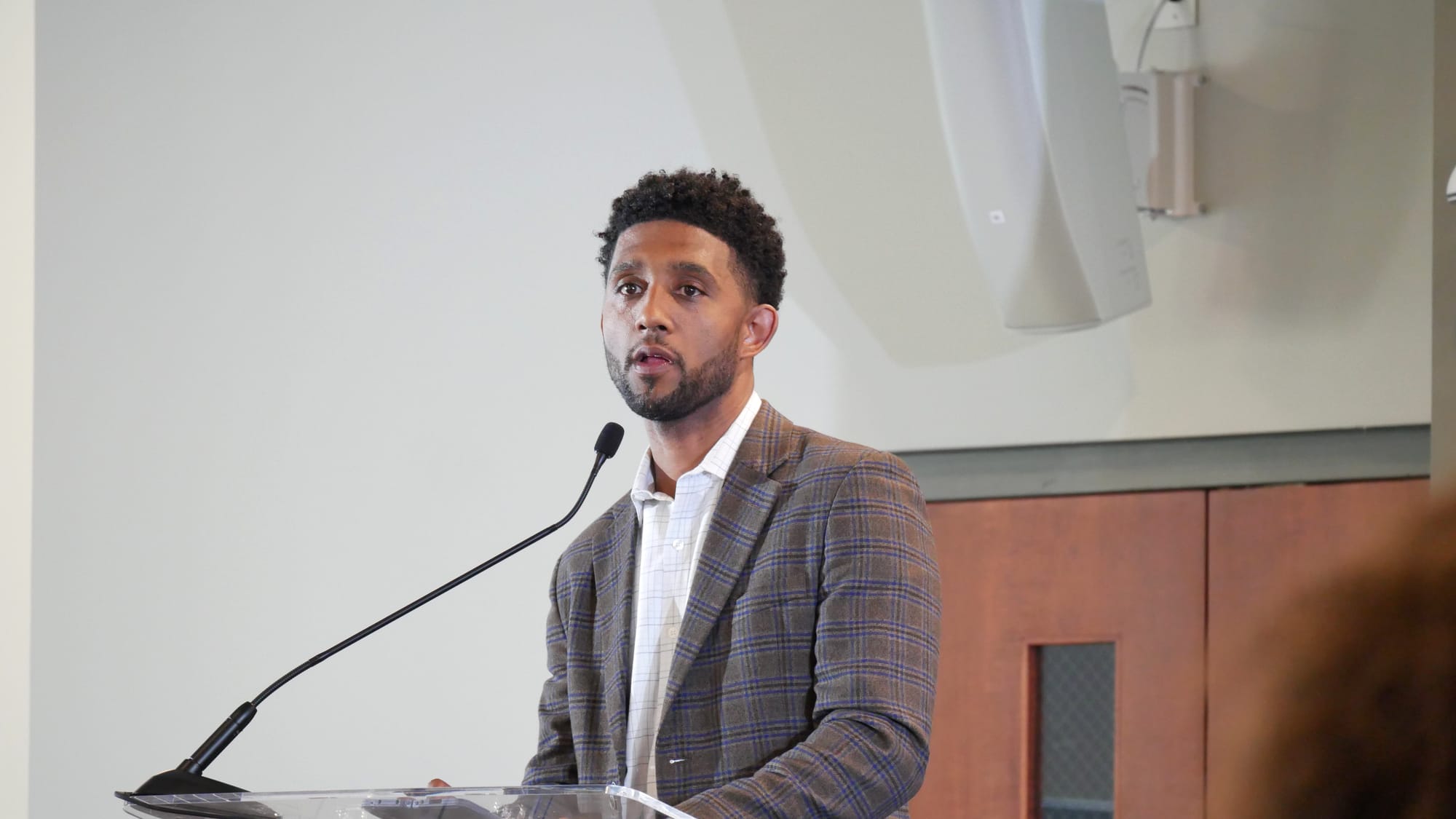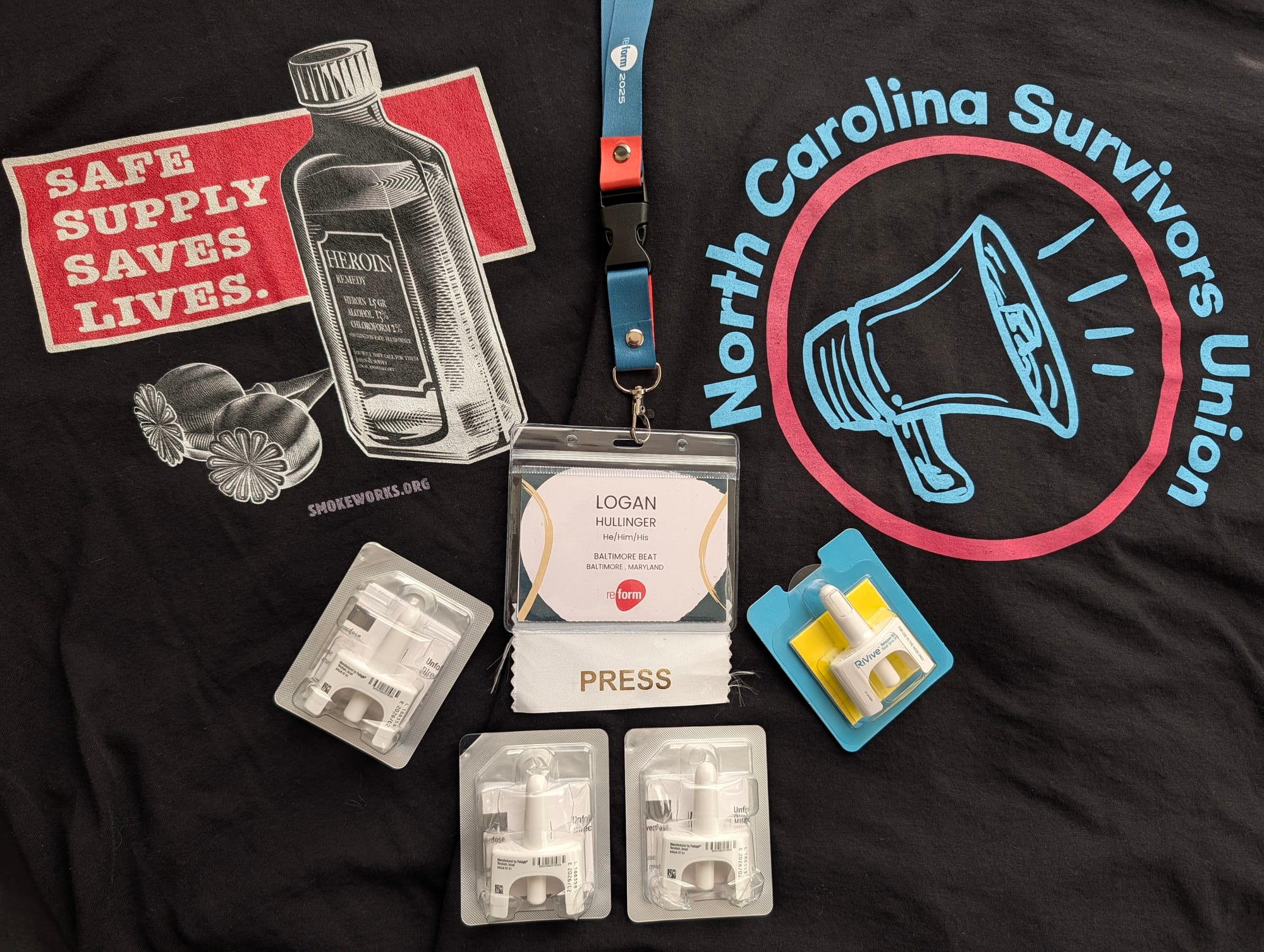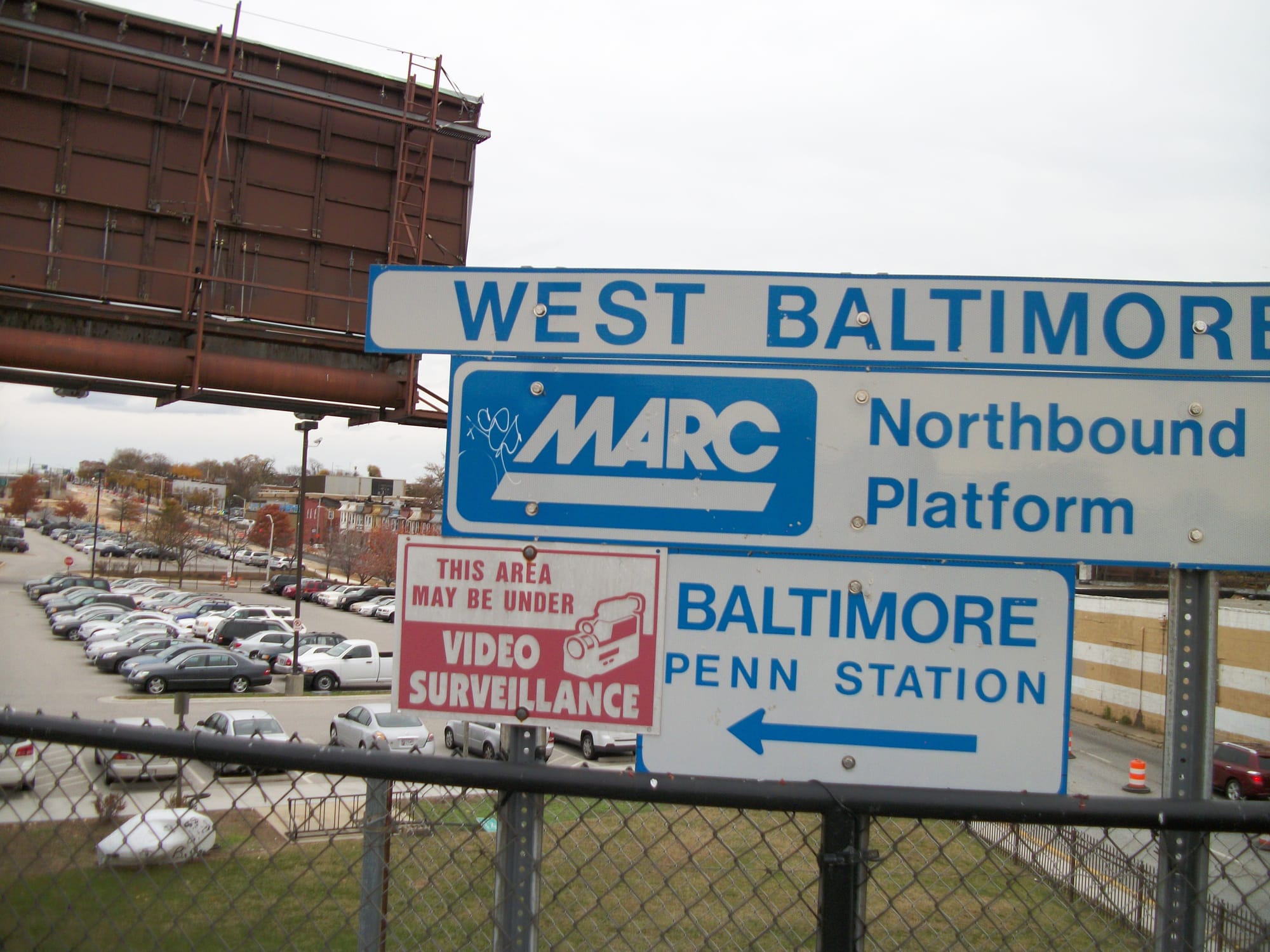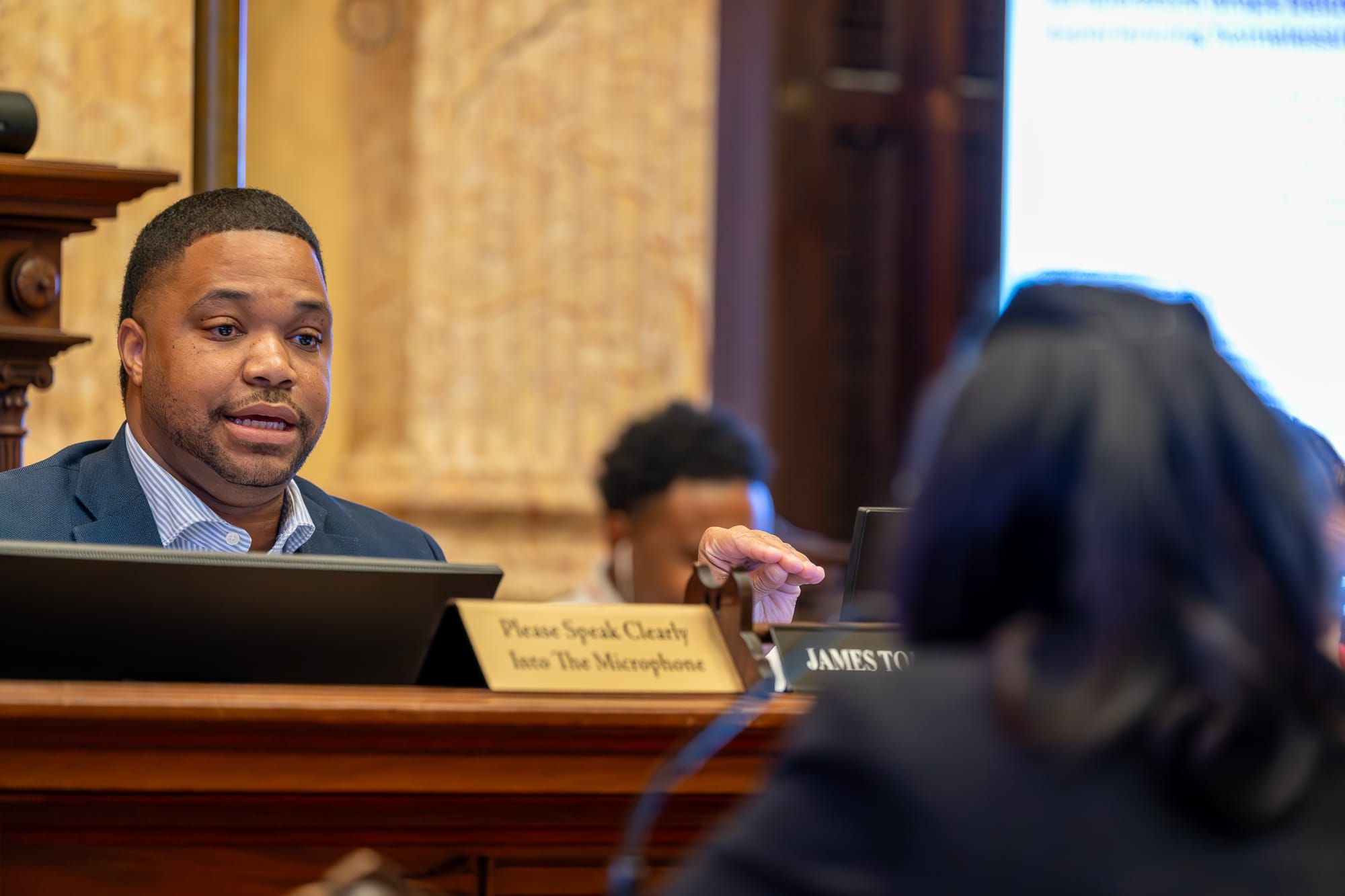
Mayor Brandon Scott launched a national public relations campaign this week to defend Baltimore’s progress in tamping down violent crime — one that lauded law enforcement but failed to provide any plans to protect some of the city’s most vulnerable residents from the Trump administration’s recent attacks.
Scott appeared on national television at least five times in just three days in response to President Donald Trump claiming crime in the city was out of control. The media blitz provided a stark contrast to the city’s response — or lack thereof — to the president’s July 24 executive order, which aims to criminalize homelessness, ramp up forced institutionalization of those with mental illnesses and substance use disorders, and defund life-saving harm reduction programs. The three-week-old order poses significant public health and human rights implications, but it wasn’t until the city’s name was dragged through the mud that the mayor and his team sprang into action.
Scott first joined CNN on Monday. On Tuesday, it was MSNBC, CNN and BBC. Then, on Wednesday, the mayor’s tour ended with another MSNBC interview.
“I think it’s very notable that each and every one of the cities called out by the president has a Black mayor, and most of those cities are seeing historic lows in violent crime,” Scott said on CNN. “The reality is no mayor is out here saying that we don’t have to deal with crime. That’s our No. 1 issue that we deal with each and every day.”
Scott was referencing the day prior, when Trump said Baltimore, in addition to New York City, Los Angeles and Oakland, was "so far gone" on violent crime, despite crimes such as homicides dropping dramatically.
Baltimore has seen a roughly 24% decrease in homicides and an 18% decline in nonfatal shootings compared to this time last year, according to city officials. In addition, the city’s seen 84 homicides this year, the fewest in more than 50 years.
However, that progress comes against a grim backdrop, both in terms of policing and ongoing threats to public health.
As city officials repeatedly tout the violent crime numbers, it was fewer than two months ago that three people died during interactions with Baltimore police officers in less than two weeks. All three people were Black and allegedly experiencing mental health crises, raising questions about the city’s crisis response systems.
Meanwhile, under the guise of public safety, Trump is attempting to strip some of Baltimore’s most vulnerable residents, including those with mental health issues, of their rights.
The late July order entails a sweeping crackdown on homelessness by ordering the removal of legal barriers that restrict involuntary treatment, encouraging cities to force unsheltered individuals with mental illness and substance use disorder into long-term treatment.
It also prioritizes grant funding to cities that carry out heavy-handed police enforcement on drug use, encampments, and squatting. Meanwhile, it aims to defund harm reduction programs, marking a significant shift from compassionate care for drug users to punitive and even militarized enforcement.
Before this week, the only mention of Trump’s executive order came at an Opioid Restitution Advisory Board meeting, where Sara Whaley, the city’s executive director of response, said the city’s law department was reviewing the order.
Then, after repeated requests for comment from Baltimore Beat about the potential impact of Trump’s executive order on August 13 and how the city plans to fight it, Scott offered his first statement on the subject, saying the order “would criminalize our most vulnerable residents and slash federal funding for programs proven to be effective.”
“Despite their attempts, our city will continue to pursue our goal of making homelessness rare and brief by providing comprehensive services, offering permanent supportive housing, and increasing affordable housing citywide,” Scott said. “This pathway will strengthen our residents’ ability to break the cycle of homelessness. We will not change that approach, and if there is an attempt to utilize federal resources to unlawfully interfere with the City’s approach, we will examine all options to prevent it.”
Dr. Letitia Dzirasa, deputy mayor of health and human services, said in a statement that the city would not adopt a more punitive response to drug use and homelessness in response to Trump’s executive order.
“We do not seek to solve these issues by criminalizing or unnecessarily incarcerating individuals experiencing homelessness or substance abuse,” Dzirasa said.
Staying the course in response to Trump’s order seems to be not only the city’s plan but also the state’s, according to email correspondences obtained by the Beat.
On August 12, the state’s Behavioral Health Administration emailed local health authorities and harm reduction grantees throughout Maryland, advising them to continue their current programming.
“Following a review of programs by funding source, we are not recommending any operational changes at this time,” the email stated. “MDH remains committed to supporting voluntary, evidence-based behavioral health services for individuals, including those who use drugs.”
Trump’s threats come as Baltimore is already dealing with a dual overdose and housing crisis. Though the city’s fatal overdose rate is on the decline, it remains the highest of any major U.S. city. Unsheltered residents are particularly vulnerable as the prevalence of substance use disorder in the population skyrockets, yet many opt to remain on the streets because of myriad flaws in the city’s shelter system.
Baltimore’s 2025 Point-in-Time count, which is used to estimate the number of residents experiencing homelessness, shows that more than 2,000 Baltimoreans are unsheltered on any given night. The PIT data showed that both the total number of emergency shelter recipients and the percentage of unhoused individuals who report having substance use disorders have skyrocketed.
More than 3,200 people were in emergency shelters on any given night, more than doubling the number from 2023, when there were about 1,500. And, compared to 23% of people reporting having substance use disorder two years ago, a whopping 76% reported being addicted to a substance this year.
Funding for harm reduction initiatives, many of which serve unsheltered individuals, is also under threat at the local and federal levels after Baltimore saw a historic drop in overdose deaths last year — a decline that preliminary data shows has continued since, though the city’s fatal overdose rate has one of the highest of any major U.S. city.
On Aug. 14, the city accepted Baltimore City Circuit Court Judge Lawrence P. Fletcher-Hill’s $152 million offer in its landmark opioid case, dealing a massive blow to the city’s plans to expand its harm reduction and treatment infrastructure. The judge argued the city failed to prove McKesson and Cencora, formerly AmerisourceBergen, were responsible for 97% of opioid-related damages the city has experienced.
The city had initially sought a whopping $5.2 billion in abatement funds, but under the deal, it will receive just $100 million. The remaining $52 million is for “public nuisance” damages from a jury trial last year; it was supposed to receive $266 million before the deal.
Funding has been the cornerstone of talks about the city’s overdose prevention initiatives. The city will receive $579.8 million in restitution funds from lawsuits — the money will be allocated over 15 years — and the city’s budget for the upcoming fiscal year includes a $9.8 million increase to mental health and substance use disorder services.
It also, however, includes a $7 million cut to the health department, marking a 3.5% decrease from the year prior.
At $201 million, its budget is less than one-third of the police department’s. Nearly half of that comes from federal funding that could be lost because of the Trump administration’s barrage of cost-cutting measures that predate his recent executive order.








Comments